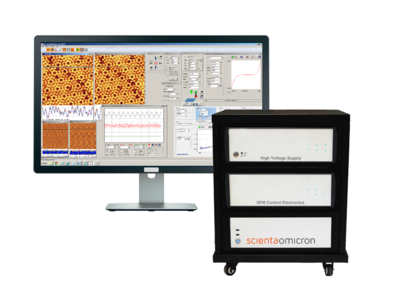Kelvin Probe Force Microscopy (KPFM)
The concept behind Kelvin probe force microscopy (KPFM) was first introduced by Lord Kelvin in 1898 to measure the work function (WF) difference between two metallic plates. At that time, it was found that when two metal plates are brought into electrical contact, a current will flow from one plate to the other until a certain equilibrium -defined by the Fermi levels alignment of the plates- is reached and a contact potential difference (CPD) appears between the plates.
In 1991 this technique was adapted for the atomic force microscope (AFM) by Nonnenmacher et al., when he and his colleagues discovered that the vibrating AFM cantilever tip could be used as a reference electrode, enabling WF measurements with the highest spatial resolution ever achieved so far, thus creating KPFM.
In short, KPFM works by detecting the electrostatic forces between an AFM cantilever tip and a conducting or semiconducting sample. Then, by applying a proper static compensation bias (VDC), these electrostatic forces are nullified, and the magnitude of the CPD between the AFM cantilever tip and the sample is obtained as it matches the applied VDC. Consequently, KPFM allows to map the WF of a sample relative to that of the AFM cantilever tip.
However, simple as it might appear, there are several interaction forces between the AFM cantilever tip and the sample. Therefore, in order to distinguish the electrostatic force from other contributions, a bias modulation (VAC) is applied in addition to VDC. The resulting oscillating force which is applied to the AFM cantilever tip can be decomposed into three spectral components, one of which can be nullified completely by adjusting VDC. The detection of this spectral component lies at the base of the KPFM functioning and can be made in two different modes, amplitude modulation and frequency modulation KPFM.


